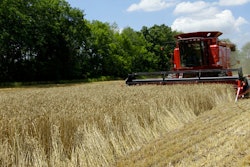For years, the majority of the beer market has been occupied by the big industry players like Anheuser-Busch and MillerCoors. While these industry leaders continue to hold a fair share of the market, smaller-scale craft breweries are gaining traction.
Also Read: Effectively Improve Operational Efficiency for Food and Beverage Manufacturers
Today, the craft brewing industry is booming. According to the Brewers Association, craft beer production volume increased in the United States by 18 percent in 2014 alone. Additionally, IBISWorld predicts that the craft and premium beer segments will reach $29.8 billion in revenue in 2019. As these small market and craft breweries keep growing, distributors are looking for new, strategic ways to obtain a competitive edge while taking on these additional SKUs. For most, this means doing things a little bit differently in order to operate more efficiently, improve customer satisfaction and cut costs. Today, one of the most promising solutions for achieving a competitive advantage is warehouse automation technology.
Maximizing Space Utilization with AS/RS
As craft breweries continue to grow and generate more SKUs, distributors are struggling to find the necessary space for storing these products. At the same time, warehouse space is at a premium and new construction can be an expensive undertaking if not planned properly in conjunction with an automated storage and retrieval system (AS/RS). But, by retrofitting their facilities or expanding in conjunction with high-density, multiple deep AS/RS, these organizations can essentially “do more with less” – they are storing more product in a smaller or same amount of space, and have room to accommodate for future growth. There is no need for off-site storage, cross docking to remote facilities, or costly construction that is not optimized as part of implementing an AS/RS. While investing in an AS/RS may seem like a large capital expenditure upfront, it will be worth it, as the systems typically deliver ROI in three to five years and boast lifespans of more than 25 years.
Combating Consumption Patterns & Seasonality Spikes
From seasonal (Oktoberfest, summer ale) to unique (chocolate, banana bread), craft brewery “flavors” are aplenty, which is one of the chief reasons consumers are flocking to this market. However, the variety of tastes means that there are major variances in consumption patterns, as well as seasonality spikes, which create difficulties in managing inventory and optimizing space. For example, if a distributor has 1,000 SKUs, and currently 200 of those account for more than 80% of their volume moving out the door, there are another 800 SKUs left taking up the remaining 20% of volume. Yet, these SKUs are primarily sitting in the warehouse taking up valuable space. This does not seem very efficient.
An AS/RS allows for better management of these “slow-moving” SKUs, but targets those top 200 SKUs and optimizes their space effectively. The ability to accommodate a distributor’s complete spectrum of SKUs is built into the AS/RS and facility design. Then, by bringing in software, like a warehouse management system (WMS), and integrating it with the AS/RS, organizations have total control over their inventory, whether it is a slow-moving brew for the winter months, an IPA that is popular all year round, or that fast-moving SKU that accounts for a majority of the volume. Therefore, without having to worry about their inventory and maximizing space, distributors can focus on more critical areas, like fulfilling orders.
Order Fulfillment
With a diverse, large number of SKUs, and a need to best serve the customer in a timely, accurate manner, order fulfillment presents another challenge for beer distributors. Retailers are keeping less inventory in stock, so it is up to these distributors to pick, pack and deliver orders more frequently, while being made up of a more diverse order profile than in the past. Interfaced with an automated picking solution, an AS/RS allows organizations to store and retrieve pallets, layers and cases of beer for just-in-time (JIT) order fulfillment. Case-level picking is especially useful, given the number of SKUs, and helps assemble a pallet with multiple types of product to fulfill a single order. AS/RS can ensure optimal order fulfillment, from end to end. It is easy to pick cases, efficiently locate then to the right pallet, wrap them and then move them onto the delivery truck.
Optimizing Product Handling & Reducing Labor
Moving heavy cases in the putaway, order fulfillment and delivery process is, without a doubt, a beer distributor’s most labor-intensive task. And, it’s no secret that beer bottles are breakable. Automation technology significantly reduces manual labor to improve productivity, and ensures the safe handling of products to minimize product damage.
Other Cost Savings
Along with the savings associated with improving space utilization, productivity, and inventory management, an AS/RS in particular provides a number of other opportunities for reducing costs. For one, automated warehouses require less energy to function due to the need for fewer interior lights and less space to regulate temperature. Especially in refrigerated or temperature-controlled warehouses, businesses experience lower energy costs, often by about 30 percent – a certain “plus” for the beer industry. Also, many automated warehouses report savings due to less waste and lower maintenance costs.
At a time when craft brewing is at an all-time high and the competition for distributing these value-added brands is fierce, investing in the latest warehouse automation technology is an ideal strategy for long-term success. Whether a distributor is looking to streamline order fulfillment, meet changing consumption patterns, or simply maximize existing space, automation provides the flexibility needed to meet current challenges and adapt to meet new ones in the future.























